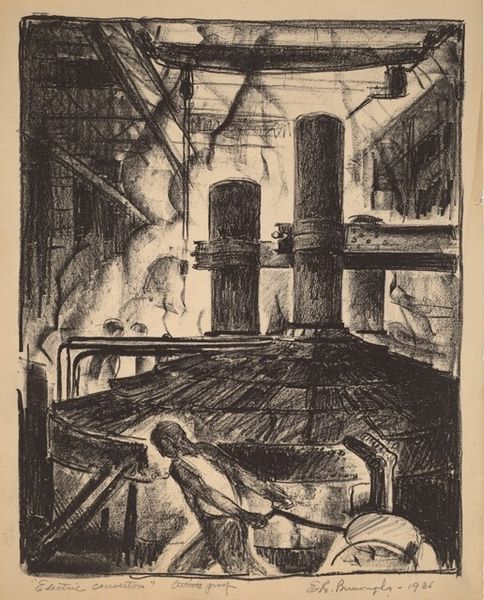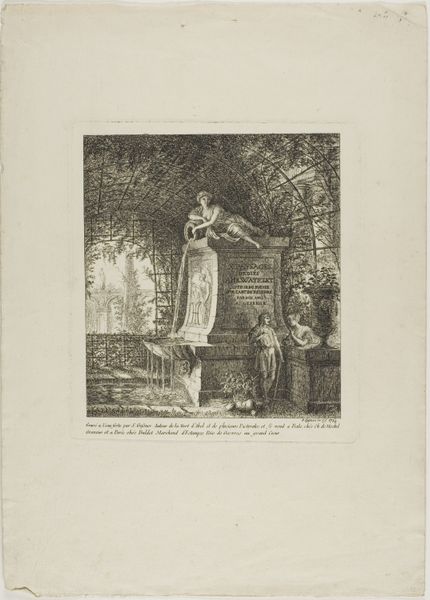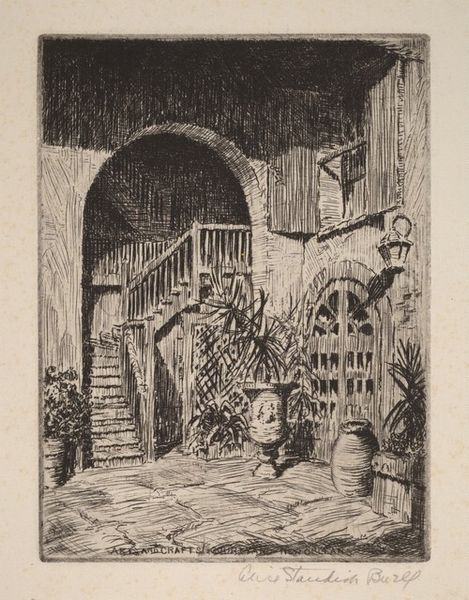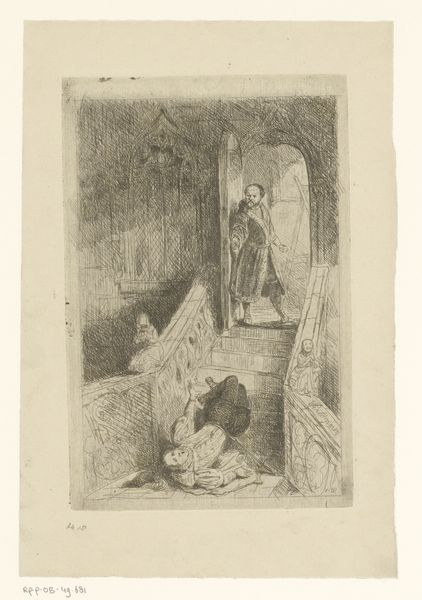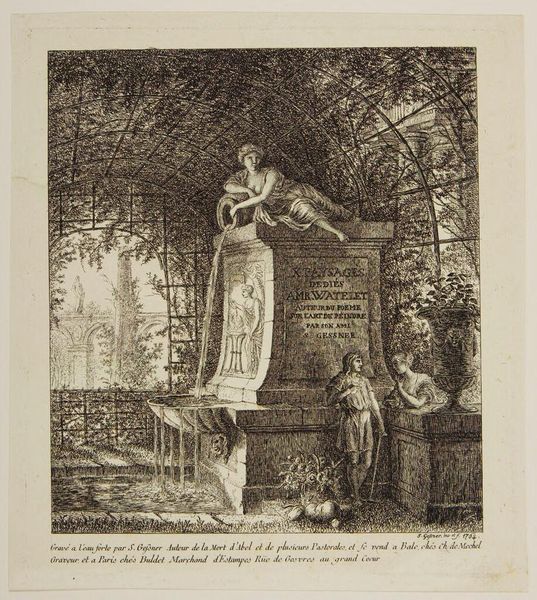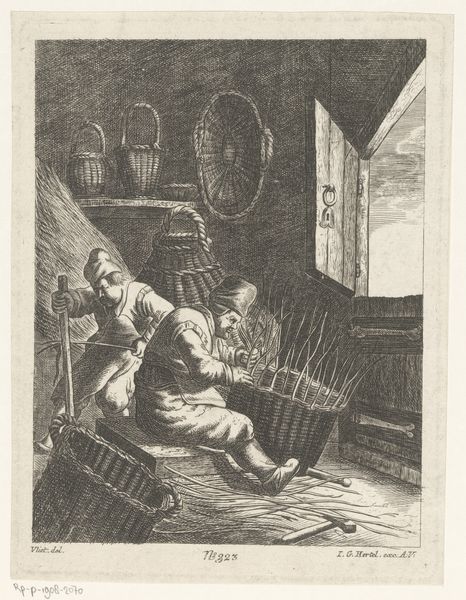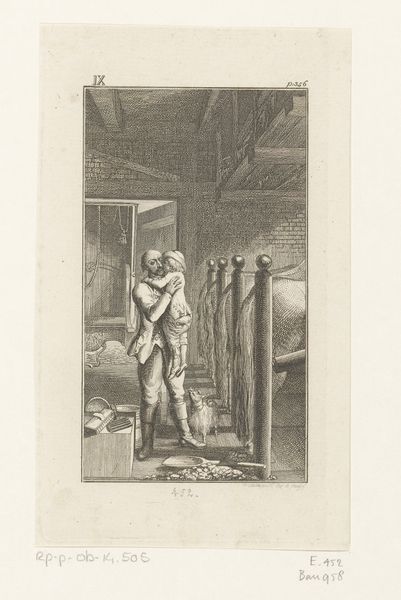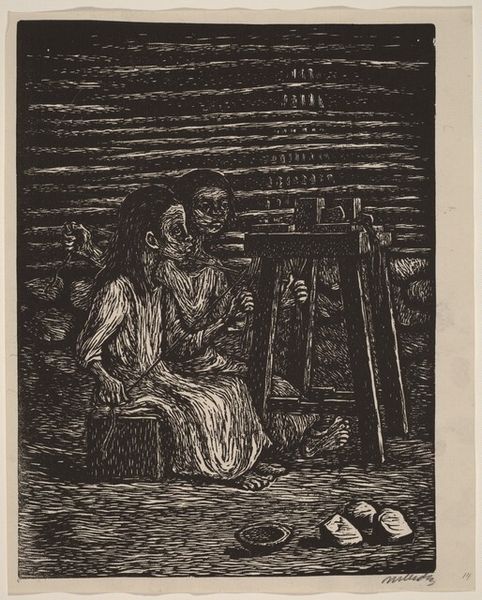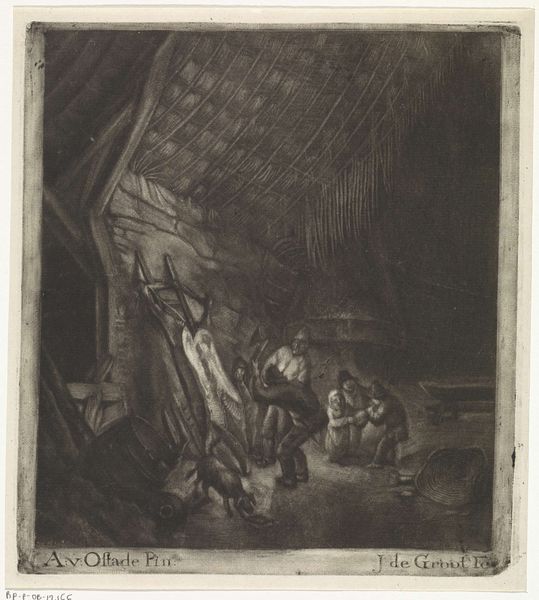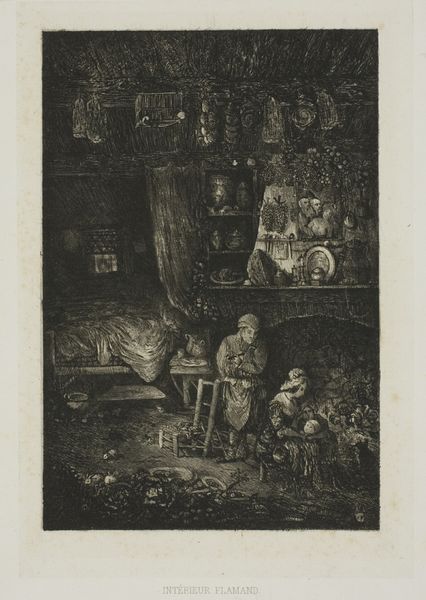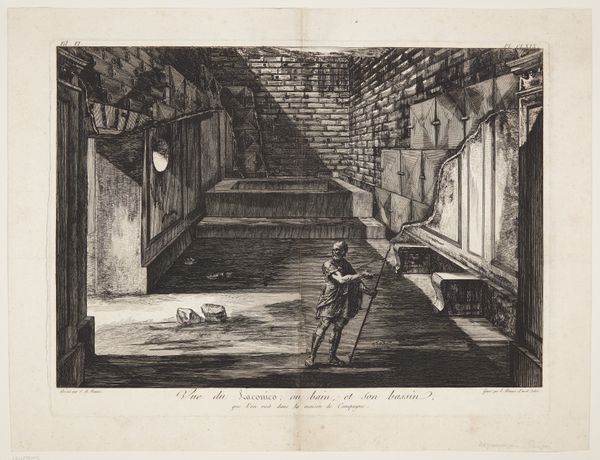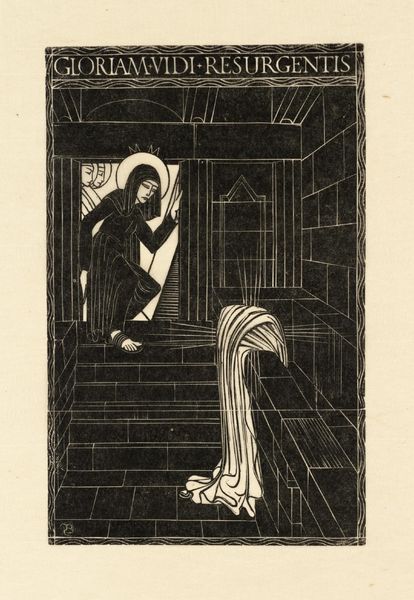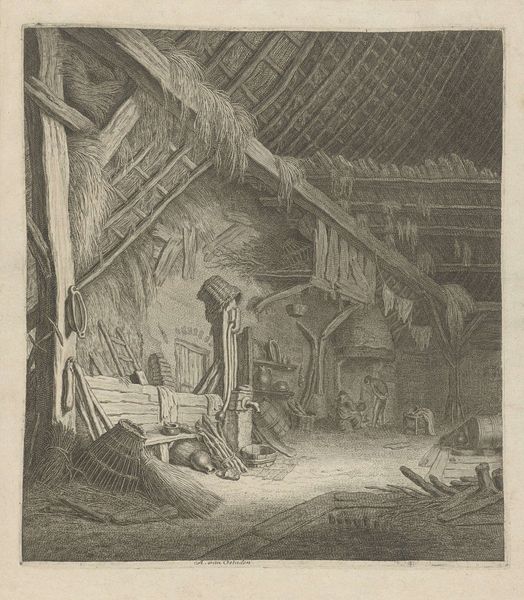
drawing, print, woodcut
#
drawing
#
narrative-art
# print
#
figuration
#
woodcut
#
monochrome
Copyright: National Gallery of Art: CC0 1.0
Editor: This is M.C. Escher's "Illustration for 'The Terrible Adventures of Scholastica'," a woodcut print from 1932. The strong contrast between light and dark immediately creates a dramatic, almost theatrical mood. What do you see in this piece beyond the narrative? Curator: I see a powerful visual statement about knowledge, power, and gender. The single candle held by the man illuminates the fallen woman, Scholastica. It begs the question: Whose perspective shapes our understanding of the "terrible" adventures she endures? Is her experience being framed by a patriarchal lens? Editor: That's a very interesting point. I was just seeing a scene, almost like a snapshot from a story. I hadn’t really thought about whose point of view was being represented. Curator: The skewed perspective and claustrophobic composition reinforce a sense of confinement. Consider the social context of the 1930s. Did the depiction of women in such scenarios reflect anxieties or critiques about shifting gender roles during that time? Also, this is an illustration, but who is the author of the novel being illustrated, and what impact might they have? Editor: I'm not familiar with the text by Scholastica. Thinking about Escher's choice to represent the scene this way does change things. What strikes me now is not the adventure itself, but the power dynamic illustrated in the frame. Curator: Exactly. Escher’s visual language transforms a simple narrative illustration into a commentary on power, visibility, and whose stories are deemed important. This dialogue between art and its socio-political backdrop provides context and makes for such relevant discourse. Editor: This really encourages me to consider who holds the narrative power within any representation and how that impacts our understanding. Curator: Indeed. Now, more than ever, unpacking these visual and historical relationships challenges us to interpret artwork.
Comments
No comments
Be the first to comment and join the conversation on the ultimate creative platform.
